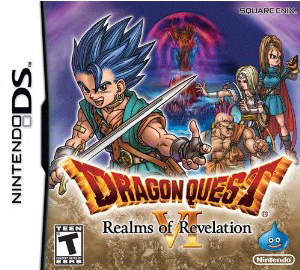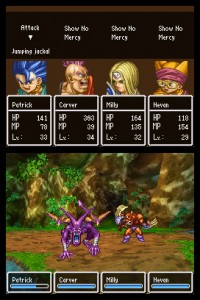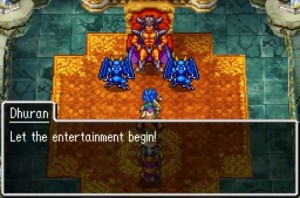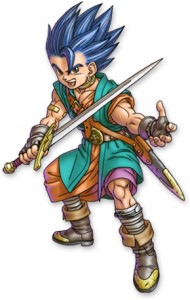Final roundup. Sorry to keep going on and on about Harukanaru Toki no Naka de 4 , I’m just so irritated by it all, and writing helps me get it out of my system. This is the last post, I promise.
, I’m just so irritated by it all, and writing helps me get it out of my system. This is the last post, I promise.
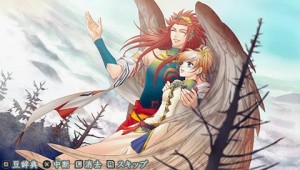
Leggo mah boobies
The Good
1. Lovely art. The character designs, monster designs, the backgrounds, the CGs, all gorgeous. Shame about the repeated scenery though.
2. Decent music. I played for 40 hours and never muted it, that’s gotta count for something.
3. Excellent voice-acting. Everyone did an absolutely stellar job. Otome game makers seem to spend a lot of money on “star” VAs for their games, and this time they definitely got their money’s worth. However the game is not fully-voiced or even close to it, so maybe they should have spent the money on cheaper actors so they could afford to voice the whole thing?
4. Easy to replay because of the chapter-skipping and text-forwarding system. If you play your cards right the first time you won’t have to play chapters 1-3 again.
5. The story can change drastically depending on which character you pursue. The events, the people who join you and even the final boss change. It’s like Tactical Guild in that respect. And like Tactical Guild, some of the plot developments are quite nonsensical, as I explained at copious length in a previous post.
6. You can get endings for many of the side characters as well. The catch is that you have to complete a main character’s route first. E.g. if I’d really wanted Ayuki I could have gotten him after Oshihito’s ending. Since some of the main routes are so short on logic, though, maybe the effort put into minor routes should have been poured into those instead.
7. Good replay value because of the above. Getting all the cutscenes and all the CGs will keep you busy for a while. I’d estimate about 40-70 hours if you’re a fast reader with a guide.
8. I actually like the fact that Chihiro feels no compunction about killing enemy soldiers and that she adapts to her new role so quickly. It’s highly unnatural for a high school girl to take so readily to politics and mass murder (and the absence of cellphones and running water), but at least it saved us the usual whining and angsting about stuff she’s going to end up doing anyway.
The Bad
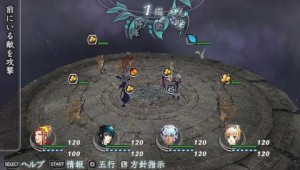 1. They wasted a perfectly good battle system. They had a nice elemental system going on there with skills and summons and combo attacks and other stuff, but there’s no one to use it on. Random battles all play out exactly the same: you belt out your strongest combo and heal up at one of many, many healing spots. Any story battle you’re supposed to win will be piss-easy. Any battle you are NOT supposed to win will ALSO be easy, but it will end after a few turns and the game will pretend you were losing anyway.
1. They wasted a perfectly good battle system. They had a nice elemental system going on there with skills and summons and combo attacks and other stuff, but there’s no one to use it on. Random battles all play out exactly the same: you belt out your strongest combo and heal up at one of many, many healing spots. Any story battle you’re supposed to win will be piss-easy. Any battle you are NOT supposed to win will ALSO be easy, but it will end after a few turns and the game will pretend you were losing anyway.
2. While the character designs and background art are nice, the 3D characters on the screen are small and awful. They move terribly as well.
3. Even with the fast-forward button at max speed, it still takes a while to go through scenes you’ve already seen. Plus you still have to do all the walking and choosing yourself, so it’s limited. I lost count of the number of times I played chapter 4 and 5, and I fought the Black Dragon at least 6 times. A “Play like I did last time unless something new happens” function would be most welcome.
4. Forget the Black Dragon: the real villain of most routes was Lady Sai, and she got away with it every single time. She plots to let Nagi kill himself, she set up the Black Dragon as the national guardian, she imprisons Chihiro, she tries to get Kazahaya killed (because he’s getting too close to Chihiro, but somehow she’s not bothered by the Futsu-Chihi romance in another route) etc etc. Sure, things work out regardless, but the hateful old bat always gets off scot-free. No fair!
5. Lots and lots of loading, even with data install. Probably the worst I’ve seen on the PSP so far. Or maybe I was just spoiled by Phantasy Star Portable.
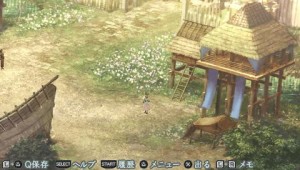
Let’s play “Spot the Protagonist!”
6. Yet another final boss that thinks humans must be destroyed because they’re cruel and destructive. It’s one thing if the boss is a human who has presumably had a hard life, but this is a dragon god. What business is it of yours if we want to kill each other? Butt out!
7. The “protagonist in another world” and “stranger becomes rebel leader” stories” have been told before, and in much better ways. In the time it takes to play this game, you can watch Now and Then, Here and There, Twelve Kingdoms and Utawarerumono back to back and get an even better experience. The fact that the major antagonists of the game, the Tokoyos, can vanish without a trace on at least two routes without the matter even being commented on shows how little importance the writers placed on sense and consistency anyway.
8. Chihiro is hard to relate to. She’s inconsistent. Sometimes she wants to protect her country, other times she just wants to save her friends. First we’re told she has amnesia, then she’s all up in “Princess” mode of a country she can’t even remember. Sometimes she’s shaking in her boots before the enemy, at other times she’s standing up to a dragon. Then right back to the quaking. I can’t get under the skin of someone whose personality I can’t pin down.
9. The routes vary wildly in terms of romantic-ness. Tooya starts calling you his wife from the prologue and Kazahaya is constantly finding excuses to touch you (brr). At the other end of the spectrum, there’s Nagi-Chihiro’s “bickering siblings” and Oshihito-Chihiro’s “barely even friends” relationships. In the latter cases it’s really not clear how the romance came about or what she sees in them and vice-versa. They’re all friends, trying to get along, then there’s a huge jump and suddenly they’re in madly love. It’s not convincing at all.
The Ugly
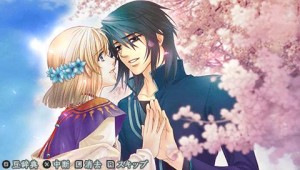
A lovely scene, but it came out of nowhere
1. The game works on a “flag” system, which I detest. I prefer an affection system, which basically means you just have to get a guy to like you and presto, you’ve got it made. Here you have to get all of a character’s events, at the right time, in the right order or you’ll miss their ending. In fact, if you get too many events for another guy, you’ll miss their route anyway. While there’s a star system that shows how they feel about Chihiro, it makes no difference to the outcome.
2. Problem #1 wouldn’t be so bad if not for the fact that it’s impossible to get anyone without a guide. There’s almost no way to trigger all of a certain character’s events without knowing them in advance. The only way you could do it is if a) You got very, very lucky or b) If you checked every single location on the map every single time something new happened. That can mean visiting up to 15 different spots every time you move the story forward the least little bit. That’s crazy. I tried it, and believe me, it sucked.
3. Nonsensical developments on some routes. I already went into detail about all the things wrong with Nagi’s and Futsuhiko’s routes in the last post. Major bad guys vanishing without a trace, major sources of angst being completely ignored, what happens next never being explained, etc.
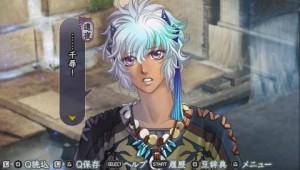
He looks as confused as I feel
4. Some questions still remain at the end. By rights they should have been answered at least in the default route, since that’s what most players are likely to get first. These are questions I had based on the routes I did (Chihiro solo, Tooya, Nagi, Futsuhiko, Oshihito), so if the answers are revealed in another route and you know them, do share.
- What’s with the white kirin at the beginning of the game? Chihiro says he’s the first god she ever spoke to, but what’s that got to do with anything? [never mind, a spoiler site just told me the kirin is Kazahaya. Bleeegghhhh]
- The white dragon. Does he even exist? None of the routes so far have told me why Chihiro can’t hear his voice.
- What’s up with the Raja and the black dragon? How did they get in touch, how did he get possessed, what was he trying to achieve, why is Chihiro such a threat to him?
- How did Kazahaya and Nagi get together before going to the modern world? i.e. why did those two end up with Chihiro and not anyone else? If they didn’t know each other before, then how did the 10-year old Nagi just happen to end up at/near the palace in time for the invasion and why did Kazahaya take him along to the other world?
- What war did Nagi’s master die in and why is he doomed to wander the road to the land of dead forever?
- What bugged me most: How are the romances going to play out after the story ends? We are told the princess is not allowed to fall in love without the dragon’s permission. So apart from Chihiro’s endings with Nagi and Ashvin, who are also royalty and can presumably work something out politically… there’s no future for any of her other relationships. They’re going to date until it’s time for her to marry, and then they’re going to have to break up.
- “The power of true love will win out!” No it won’t. Nagi and Futsuhiko’s routes both showed that Chihiro is a helpless puppet and figurehead, controlled by Lady Sai and the rest of her officials. If she doesn’t do what they want, they’re fully capable of confining her indefinitely or finding a replacement. When you look at it that way, the romantic endings where Chihiro becomes queen are actually BAD endings. ((o_o))
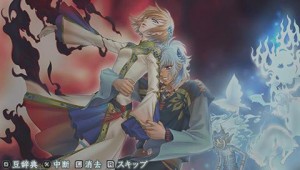 5. It seems most questions relating to the actual world worldview (miko, dragons, world destruction) are only answered on Kazahaya’s route, and possibly also on Hiiragi’s. In other words, the other guys are just tasty side dishes. Maybe that’s just how the Harutoki series works, but it pains me to realize almost all the guys could be removed from the story and everything would go on as normal with only minor changes. Tooya, Sazaki and Nagi, definitely. Oshihito and Futsuhiko are slightly more important but not irreplaceable. That leaves Kazahaya, Hiiragi and Ashvin as the only revelant ones. And the ones I can’t stand the most. And you wonder why I didn’t like this game…
5. It seems most questions relating to the actual world worldview (miko, dragons, world destruction) are only answered on Kazahaya’s route, and possibly also on Hiiragi’s. In other words, the other guys are just tasty side dishes. Maybe that’s just how the Harutoki series works, but it pains me to realize almost all the guys could be removed from the story and everything would go on as normal with only minor changes. Tooya, Sazaki and Nagi, definitely. Oshihito and Futsuhiko are slightly more important but not irreplaceable. That leaves Kazahaya, Hiiragi and Ashvin as the only revelant ones. And the ones I can’t stand the most. And you wonder why I didn’t like this game…
And so on, and so forth. Good, now I’ve finally got everything out of my system. The diverging stories were interesting enough to keep me playing for 40 hours, but I can’t say I enjoyed myself or that it was a good game. The flaws, especially the nonsensical story developments and repetitive battles, made it hard to enjoy most of the time.
However with a better thought-out story and a more relevant battle system, the series could be worth playing. If I’m lucky, the previous games were better and HTND4 just messed things up. Either that or Koei learned from their mistakes and made HTND5 even better. So I won’t toss the whole series out just yet because of one bad installment, I’ll try another one when I get the chance.
Phew!
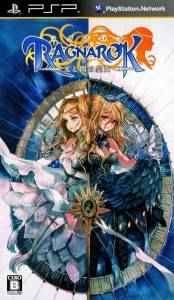 I haven’t gotten that far into this, but I’ll be busy for the next couple of days so I thought I’d dash something off quickly while I still had the time.
I haven’t gotten that far into this, but I’ll be busy for the next couple of days so I thought I’d dash something off quickly while I still had the time.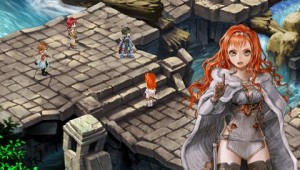 1. The character portraits and background shots are BEAUTIFUL, but the 3D characters look astonishingly bad, especially close up. I’ve gotten used to it, but the massive difference in quality is pretty shocking.
1. The character portraits and background shots are BEAUTIFUL, but the 3D characters look astonishingly bad, especially close up. I’ve gotten used to it, but the massive difference in quality is pretty shocking.